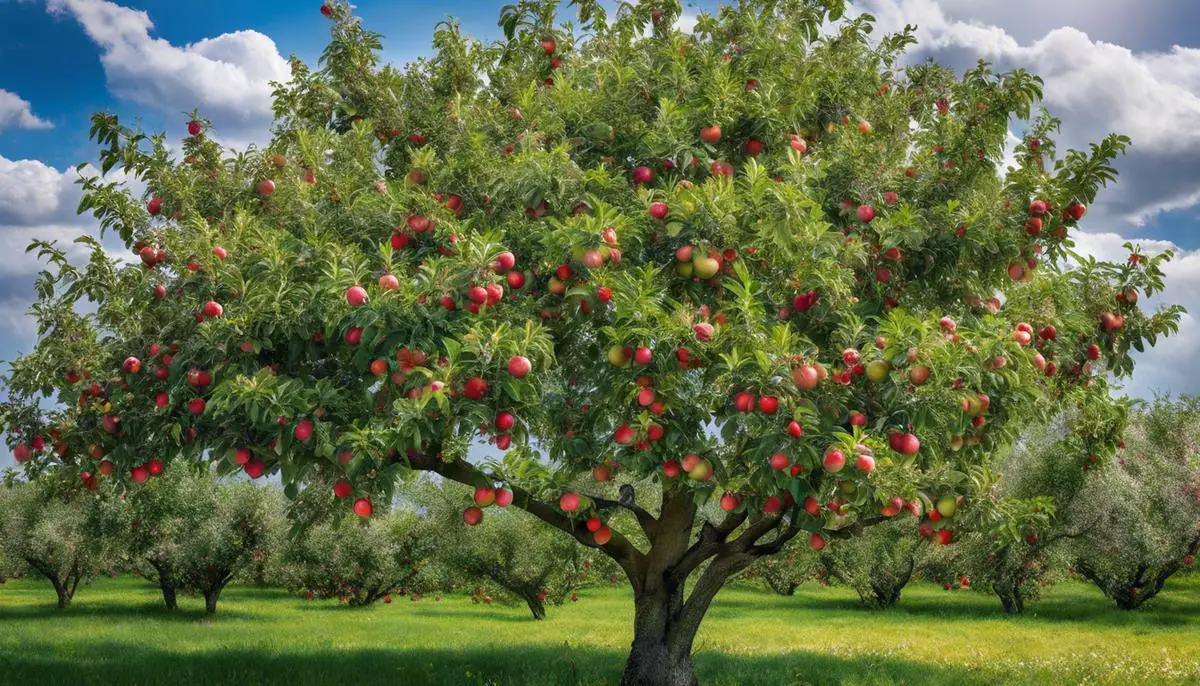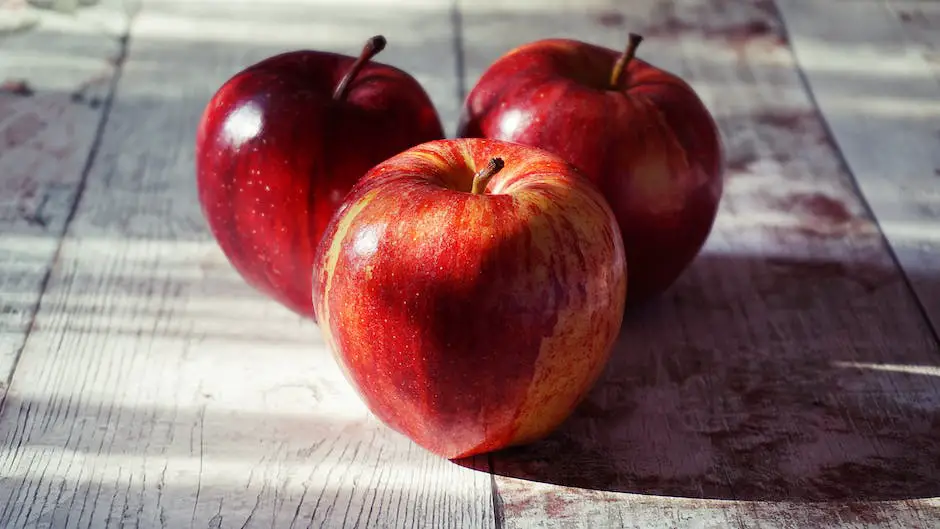Apples have forever held a compelling allure and a key place in the world of agriculture. This is largely due to the nuanced process of growing, nurturing, and harvesting them that has captivated humans for generations, becoming both an art and science. This journey begins with comprehending the apple tree’s growth stages from bloom to ripening. The pursuit of knowledge doesn’t end there, however; it extends into understanding traditional apple harvesting methodologies, reflecting traditions and practices that have preserved the fruit’s quality and flavor for centuries. Lastly, to stay equipped in the face of evolving techniques, it’s crucial to explore the modern age of apple tree harvesting, marked by revolutionary machines and tools that have changed the game for apple growers and afficionados alike.
Understanding Apple Tree Growing Seasons
Title: Discovering the Unique Stages of Apple Tree Growth: Key to Harvesting Success
Have you ever marveled at a fully laden apple tree in harvest season and wondered about the magic that happens before those plump, delicious fruits appear? Well, much akin to the crisp bite of that first apple of the season, the journey from bloom to harvest is both fascinating and intricate. Here at The Green Thumbs, we’re delving into the unique stages of apple tree growth to understand their significance in successful harvesting.
Breaking Dormancy: Waking from Winter Slumber
In the cold winter months, apple trees are ensnared by dormancy, saving their energy for future endeavors. However, as winter fades and temperatures rise, sap starts flowing indicating the end of the trees’ slumber. This burgeoning life signals the first stage of an apple tree’s growth and prepares it for the upcoming cycle of fruit production.
Blossom Time: A Floral Fiesta
Following dormancy, comes the most enchanting phase – blossom time. The tree springs into action, producing clusters of magnificent white to pink-hued flowers. In the rush of contrasts between the vibrancy of blossoms and the simplicity of bare branches, the role bees play in pollinating these flowers can’t be overstated. It’s here that the initial steps of fruit are taken as the flowers, after pollination, transform into tiny apple embryos.
Fruit Set: The Transition of Power
As pollination ends, the apple tree enters the ‘fruit set’ stage. It’s a decisive phase when the tree sheds unpollinated or poorly developed blossoms, focusing its energy on promising fruits. These tiny, promising fruits undergo massive growth, their simple structures evolving into familiar apple shapes.
Fruit Development: The Slow and Steady Race
Post-fruit set, the tree steps into the longest phase – fruit development. In this slow but steady race, the tree provides nutrients and water to the growing apples while battling pests, diseases, and weather changes. It’s a testing time, as a healthy development now will result in juicy, crunchy fruits at harvest tie
Harvest: Reaping the Rewards
Finally, after months of nurturing and growth, the apples reach their peak ripeness, and it’s time for harvest. The timeline varies with variety, but typically, late summer through fall is a hive of activity for apple growers. Harvest time is critical, as too early may result in tart fruits, while late harvesting can yield overripe or rotten apples. It’s at this stage that understanding the tree’s growth process comes full circle – knowledge of the growth stages can help predict the perfect time for harvesting.
So there you have it. To witness an apple tree from dormancy to harvest, understanding each unique stage of growth, brings not only knowledge but a profound appreciation for these marvels of nature. It’s the rhythm, the constancy of these stages that hold the secret to a bountiful harvest. Next time you bite into a juicy apple, remember the journey it has undertaken – from a blossom fluttering in the wind to the crisp, delicious fruit in your hand.

The Art of Traditional Apple Harvesting
The Transformation: Post Harvest
From the moment that final, or for some hobbyists, the first crisp apple is plucked from the tree, it’s evident that the work is far from over. What comes next is a crucial part of the traditional apple harvesting process known as the ‘post-harvest’ phase. This includes tasks like cleaning, sorting, storing, and eventually, packaging – each task playing an important role in maintaining the quality of the harvested apples.
Cleaning and Sorting: Unseen Heroes
It’s obvious that dusty, leaf-covered apples aren’t very appetizing. This is where the subtle science of cleaning apples comes in. Traditionally, gentle washing, scrubbing, and rinsing methods are used to ensure the removal of any undesirable elements from the apples’ surfaces. The goal is to ensure they’re safe for consumption while maintaining their visual appeal.
Sorting follows closely behind, a task traditionally done by hand. Apples are sorted by size, color, and, most importantly, condition. Any bruised, damaged, or infected apples are removed – ensuring only the best quality apples make it to the final stage. It’s a meticulous and labor-intensive process, but the outcome is well worth it every time.
Storage: A Pause in Ripening
The marvel of apple storage lies in its simplicity and effectiveness. Traditionally, apples are stored in cool, dark, and slightly humid conditions – typically in carefully constructed cellars. The cool environment prevents the apples from ripening further, ensuring their freshness for months! It’s fascinating to realize how this age-old method, rooted in three simple elements, is still a prevalent practice used by countless apple enthusiasts.
Packaging: The Final Call
Finally, it’s time for packaging – the last hurdle in the traditional apple harvesting journey. Historically, apples are packaged in wooden crates or cardboard boxes, cushioned by paper or straw. This helps prevent any accidental bruising of the apples during transportation.
Why Tradition Matters Today
There’s an undeniable appeal to traditional apple harvesting; a simplistic beauty that newer, mechanized methods can’t replicate. Not only does this method allow hobbyists to stay connected to the process from start to finish, but it also ensures the preservation of quality at every stage.
Despite the availability of faster, modern technologies, these time-honored methods continue to be a vital part of apple harvesting for enthusiasts all over. These traditions are rich with years of knowledge and experience, offering invaluable insights that serve to enhance our understanding and appreciation of this fascinating hobby. As much as it’s about getting a tasty yield, it’s equally about the journey of transformation – from dormant buds in winter to juicy, ripe apples in the fall.

Modern Apple Tree Harvesters: An Overview
Now, let’s move into the era of the latest technology, a journey filled with innovations and adaptations, shaping the apple harvest landscape in modern times:
Automated Harvesting Machines:
In the never-ending quest for efficiency, technology has made great strides in apple harvesting. Automated apple picking machines use cutting-edge technology to detect ripe fruit, gently grasp them, and then transfer them to a collection bin, all without human hands. These machines use vision systems and advanced algorithms to select and pick apples without causing damage. They increase productivity and minimize labor costs, and are particularly valuable in areas where farm labor is scarce.
Drones and Satellites:
Monitoring the health of an orchard has come a long way from simple visual inspections. Drones and satellites, equipped with multispectral imaging technology, can capture images that assess tree health and detect diseases or pest outbreaks. This information helps growers take proactive steps to address problems and maximize yields. In addition, these aerial systems can analyze soil conditions, and even help with irrigation management.
Remote Sensing and Precision Agriculture:
No longer does a farmer manage an entire orchard as a single unit. Rather, precision agriculture treats each tree as an individual, adjusting water, fertilizer, and pest management based on its unique needs. Sensors in the field send data on soil and plant conditions to a processing system, which recommends appropriate actions. This method reduces waste and ensures that every tree gets precisely what it needs to thrive.
Robotic Sorting and Grading:
Post-harvest, robotic arms equipped with high-speed cameras and software separate apples based on quality, color, and size. This eliminates human error and reduces the time taken to sort and grade apples, creating a more reliable and efficient process.
Controlled Atmosphere Storage:
This modern method of storage increases the apple’s shelf life significantly. It carefully controls the temperature, oxygen, carbon dioxide, and humidity levels to slow down the apple’s ripening process. This system helps maintain the apple’s freshness, flavor, and crispness way beyond the traditional method.
Mechanical Pruning:
Pruning is vital in an apple orchard for maintaining tree health and maximizing fruit quality. Precision pruning equipment provides a faster and better alternative to manual pruning. These machines can prune multiple trees in a single pass, significantly reducing time and labor costs.
Today’s modern apple harvest techniques are a fascinating fusion of time-honored practices and cutting-edge technology. While tradition has its charm, the integration of these new methods ensures a future where apple growing remains sustainable, efficient, and rewarding. These techniques and technologies not only simplify the complex process of apple cultivation but also create doors towards opportunities for growers, ensuring the prosperity and longevity of apple harvests to come.

Apple trees’ stages of growth, the art of traditional harvest, and technological progression in apple harvesting are all interconnected facets that form the comprehensive picture of the apple agriculture industry. Each plays a crucial role in the apple’s journey from a bloom on a tree to a fruit in our basket. Understanding these steps opens a window into the meticulous care, deep-rooted traditions, and advanced innovations that work in harmony to deliver the taste, aroma, and nutrition of the apples we enjoy. As we continue to appreciate and benefit from this remarkable fruit, it is the evolving knowledge and application of these harvesting practices that will ensure the apple’s legacy continues in all its delicious glory.